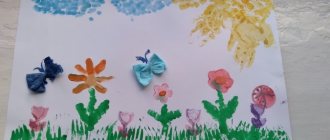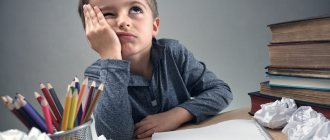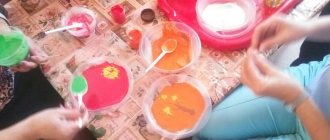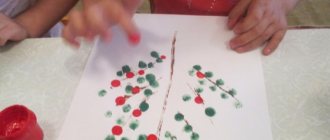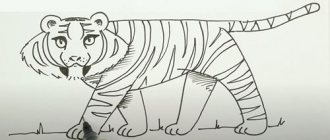I. Statement of the problem : ineffective subject environment in the art corner.
II. Justification of the problem :
1. Lack of equipment in the creativity corner.
2. Children’s inability to draw using non-traditional techniques.
3. Incompetence of parents in the matter of drawing using non-traditional techniques.
III. The goal of the project: to create conditions for the visual development of children using non-traditional techniques.
IV. Tasks: 1. Replenish the corner with equipment. 2. Teach children unconventional drawing techniques. 3. Give parents knowledge on drawing using non-traditional techniques.
V. Actions: 1. Joint activities of the teacher and children 2. Consultations, memo, master class for parents.
Manufacturing: -non-traditional equipment according to art.
VI. Schedule/terms of project implementation: 2014-2015.
1. August-September.
- Study and analysis of scientific research and methodological literature on this issue; selection of visual demonstration and handout material.
- Drawing up a project plan.
2. October.
- Consultation for parents “Drawing in non-traditional ways”
- Joint activity of teacher and children “Printing with leaves”
- Making stencils.
3. November.
- Master class for parents on the topic: Using non-traditional drawing techniques with preschool children.”
- Joint activity of teacher and children “Signet from an apple”
- Making the album “Non-traditional drawing techniques”
4. December.
- Open event for parents “Skillful Hands” (circle)
- Joint activity of teacher and children “Drawing with fingers and palms”
5. January.
- Consultation for parents “Cultivating interest in drawing in children”
- Joint activity of teacher and children “Drawing with cotton swabs”
6. February.
- Consultation for parents “How to organize a home drawing lesson”
- Joint activity of teacher and children “Drawing with a candle + watercolor”
7. March.
- Memo for parents: “How to properly prepare a workplace”
- Joint activity of teacher and children “Imprint with crumpled paper”
- Manufacturing of equipment according to ISO
8. April.
- Consultation for parents “We love to draw”
- Open event for parents “Skillful Hands” (circle)
9. May.
- Album “Unconventional drawing technique”
- Open event for teachers “Skillful Hands” (circle)
- Exhibition of material on non-traditional drawing techniques “Drawing without a brush”
VII. Resources:
Literature:
- Sakulina, a manual for educators. – 2nd ed. and additional – M.: Education, 1982. – 208 p.
- Davydova, G.N. Non-traditional drawing techniques in kindergarten [Text] / G.N. Davydova, Scriptorium, 2003.
- Wenger, L.A. Raising a child’s sensory culture [Text] /L. A. Wenger, E. G. Pilyugina, N. B. Wenger. – M.: “Enlightenment”, 2005.
- Subbotina L. Development of imagination in children [Text] L. Subbotina. – Yaroslavl, 1998.
- Nikitina, A.V. Non-traditional drawing techniques in kindergarten [Text] A.V. Nikitina. – Karo, 2007.
VIII. Personnel: teachers, parents, children.
IX. Equipment: paper, paint, waste material, candles, fruit, cotton swabs.
X. Project staff:
Full name, functions, product of activity:
- Educator, organizer and presenter, consultations;
- Parents, listeners and participants, drawing;
- Children, participants, drawing skills.
XI. Project product:
- equipment for the creativity corner.
XII. Performance criteria:
The goal is achieved if:
- children independently use non-traditional drawing techniques,
- more than 50% of parents of pupils have increased their competence in drawing using non-traditional techniques
XIII. List of working documentation:
- Development of plans.
Author: Lyudmila Vasilievna Karandasheva, teacher of the structural unit “General developmental kindergarten No. 34 “Yolochka” of the municipal educational institution “Udimskaya secondary school No. 2”, Udimsky village, Russia.
The article is published in the author's edition
Fine art lesson for middle-aged children “Mushrooms in a basket”
Non-traditional techniques: signet imprinting (from potatoes), finger painting.
Program content: to form an aesthetic attitude and taste for compositions of objects, to introduce the concept of “still life”; practice combining two different techniques; develop a sense of composition and rhythm; to cultivate an aesthetic attitude towards nature through the image of mushrooms.
Equipment: A4 sheets, gouache, brush, bowls for printing and finger painting, dummies of mushrooms, drawing of a forest, basket, doll, toy squirrel, handbag, illustrations and pedagogical sketches, seals in the shape of ovals.
Progress of the lesson.
I. The teacher asks a riddle: A flatbread grew on one leg in the forest. (mushroom)
Educator: Guys, guess what it is?
Guys: Mushroom (all together).
II. A scene is played out. Characters: Katya doll, Squirrel, children.
Katya doll walks through the forest picking mushrooms. Together with the children, she remembers the names of mushrooms. Finds a mushroom.
Doll Katya: Guys, tell me, what is the name of this mushroom? (shows a dummy mushroom)
Guys: Boletus.
Doll Katya: But I found another mushroom. Guys, what is this mushroom called?
Guys: White mushroom.
Doll Katya: Yes, guys, this is a white mushroom. Now look, how many parts does this mushroom consist of?
Guys: Of two. This is a cap and a leg.
Doll Katya: Correct. What shape is the cap and what shape is the leg?
Guys: Oval.
Doll Katya: What color?
Guys: White.
The Katya doll goes further, collects mushrooms under the fir trees and birches, and puts them in her purse.
Doll Katya (looks into her purse): Oh, guys, all my mushrooms are wrinkled (pulls a mushroom out of her purse). I bent over when I collected them and they got wrinkled. (the doll is crying). What should I do?
A squirrel jumps from a branch.
Squirrel: Girl, go and get the basket. She's tough. The mushrooms won’t get crushed in it.
Doll Katya: Thank you, squirrel. (she rejoices and brings a basket from home).
Doll Katya: Guys, look at what a beautiful basket I brought. Let's see what shape and what color it is.
Guys: Oval shaped. Brown color.
Doll Katya: And now, guys, let's draw a basket and draw mushrooms in it.
III. Working with a teacher.
Educator: Guys, look at the sketches with images of still lifes. Tell me which ones did you like? (children choose and tell the teacher about their choice).
Educator: Now look carefully. I'll show you how to draw a basket. And I’ll also show you how to decorate it with your fingers so that it becomes the center of a still life. (a large oval, the lower part of which is painted over).
Educator: And now I’ll show you how to draw mushrooms.
IV. Independent work of children.
Young artists try to make a mushroom out of two ovals (a hat and a leg), print it with signets, draw a basket, fill it with mushrooms (two to four pieces), and, if desired, depict mushrooms near the basket.
The one who quickly completes the task decorates the basket with a strip of multi-colored spots (fingers).
V. Viewing children's drawings.
The viewing is carried out in a game situation: the Katya doll and the squirrel choose the funniest basket, the basket with the largest mushrooms, the most mushrooms, etc.
Author: teacher Zhuravleva S.A. (MBDOU “CRR – d/s “Solnyshko”, Republic of Mordovia, Kovylkino).

